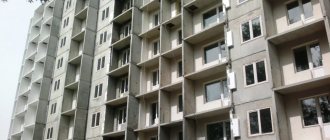What are residential and non-residential premises
Real estate is usually divided into residential and non-residential. The first includes premises where people legally live: apartment buildings, dormitories, private houses. The housing stock also includes hotels. Non-residential property is most often used for commercial or public purposes. The need to transfer housing from one stock to another arises for many: entrepreneurs who bought housing in a building for a store or for conversion into an office. If such a need arises appeared in front of you, there is no need to get lost. There is a possibility of transferring the apartment to another fund.
Transferring your home from residential to non-residential and vice versa may become necessary for many reasons. Most often, businessmen convert purchased apartments into shops, pharmacies, restaurants and cafes, offices. The status of residential premises is needed because only in it you can register, yes and live too. If you decide to translate
How to convert residential premises into non-residential premises - step-by-step instructions and how much it costs
- The housing must be owned by the applicant. This, of course, must be a legal entity. It is necessary to have written confirmation that the apartment is owned. It could be:
- will;
- gift agreement;
- registration certificate.
- This apartment should not be taken out on credit or used as collateral. Supervisory authorities are very careful to ensure that the property is legally “clean”. She should not be involved in any fraud under any circumstances.
- An apartment can be transferred from residential to non-residential status only in full, and in no case partially.
- The owner must check out of the apartment before starting the procedure for changing its status. According to the law, no one can be registered in a non-residential premises, and no one can live there permanently.
- If any illegal alterations have been made to the apartment, they must be legalized without fail. Otherwise, the transfer will simply not be given the go-ahead.
We recommend reading: The difference between a residential premises and a residential building
Very often, entrepreneurs, especially beginners, are faced with the problem of where to open their own office or store? Often the profitable and only option is to transfer residential premises to non-residential premises if this premises is owned. In essence, this procedure gives the apartment the status of commercial real estate.
non-residential
non-residential non-residential non-residential non-residential non-residential non-residential non-residential non-residential non-residential non-residential non-residential non-residential non-residential non-residential non-residential non-residential non-residential non-residential non-residential Unresidential non-residential non-residential non-residential non-residential - *non-residential*non-residential*non-residential Adjective, relative, type of declension according to A. Zaliznyak’s classification - 1b⊠. Short form husband.
R. is not used, the formation of other short forms is difficult. Console: ; root: -zhi-; suffix: ; ending: -oops [].
- : [nʲɪʐɨˈɫoɪ̯]
- not, not for housing (usually about premises) ◆ There is no example of use (see).
- one in which they do not live ◆ There is no example of use (see
). - , (about a place, territory, etc.) ◆ There is no example of use (see).
- such a room or such a place ◆ There is no example of use (see
).
Is it possible and how to divide non-residential premises into two rooms?
The last step towards completing the procedure is the application for termination of ownership rights. This application is submitted to the Federal Service for State Registration, Cadastre and Cartography. Gradually, this part of the process is transferred to multifunctional centers. For example, since 2014, Muscovites can submit an application to the MFC.
- The specialist sends the plan using the official Rosreestr portal. In this case, he will be required to endorse the document with his electronic signature;
- The specialist can transfer the plan on electronic media (disk, floppy disk, etc.) to the customer, who independently submits it to Rosreestr. Once again, the cadastral engineer must provide his digital signature before handing over the media to the customer.
Non-residential or non-residential
With the development of market relations, the concept of “non-residential premises” has become widely used in real estate transactions. However, in Russian legislation there is no clear definition of this concept.
In this regard, citizens have many difficulties and questions. This problem is especially of concern to businessmen who want to convert residential real estate into non-residential property for business purposes. This question also often arises for residents of apartment buildings, who confuse common property with non-residential premises when calculating utility bills.
Unfortunately, confusion in the concepts of residential and non-residential premises often leads to illegal real estate transactions and legal disputes. If the owner or tenant of real estate intends to use it as a site for banking or other financial and economic institutions, then the premises in which he carries out
Non-residential or non-residential how to write correctly
/ / Content
- Explication and floor plan of the premises. To do this, we first contact the Property Management Department to obtain a power of attorney to order an explication and floor plan from the BTI (Bureau of Technical Inventory). There, write a statement in the established form and present the following. documents: Russian passport and notarized power of attorney, if an authorized person applies (original and copy); document confirming ownership of the premises. This could be: a purchase and sale agreement; transfer agreement; certificate of inheritance; annuity or investment agreement; extract from the Unified State Register of Real Estate (for the premises/here is a link to instructions for obtaining this extract), etc.; may require a contract for the premises;
- Russian Federation passport; a document confirming ownership of the premises and the foundation agreement;
Let's look at residential and non-residential premises or an apartment, what is the difference? Non-residential or non-residential
Non-residential or non-residential The word non-residential denotes an attribute of an object and answers the question: what kind? This is your non-residential premises. I will classify this word as an adjective.
It is formed from a word with the same root using the prefix non-: residential - non-residential. A new word is formed as an antonym to an already existing definition. It is written together with the prefix non-. If there is opposition in the context, the words are by no means, at all, far or a negative adverb or pronoun , then the adjective quot; residentialquot; with the negative particle quot; notquot; I’ll write separately, for example: It’s not a residential building, but an empty one, which has been demolished. This is not a residential building at all. This is never a residential building.
Good afternoon, let's figure out how to correctly write the word (non)living. To do this, let's determine what part of speech it is, ask the question: quot;Which?quot; Therefore, the word (un)residential is an adjective. Consider
Transfer of residential premises to non-residential premises: algorithm of legal actions
- who is the owner;
- address;
- what is the real right to the land and the purpose as a result of the transfer;
- what is prohibited from being developed;
- conditions provided for by town planning, fire, sanitary, nature protection standards and rules of technical regulatory legal acts;
- carrying out reconstruction work (I needed to remove all existing networks and install new gas, water, electricity and heat meters);
- if the documents you provide contain incorrect information or are incomplete;
- to gain access to the premises, auxiliary premises are needed or it cannot be equipped at all;
- there is no consent of third parties;
- it is not isolated;
- the residents are registered and there is no consent, they are incompetent, are under state protection, their social situation is unsatisfactory, children without guardianship or orphans;
Not residential or non-residential
Uninhabited ⇒ Vowels in the word: vowels highlighted in red vowels are: e, and, total number of vowels: 3 (three) stressed vowel is highlighted with an accent mark “ ́ ” the stress falls on the letter: unstressed vowels are highlighted with dotted underlining “ ” unstressed vowels are: e, and the total number of unstressed vowels: 2 (two) ⇒ Consonants in the word: consonants are highlighted in green, consonants are: n, zh, l, and the total number of consonants: 4 (four) voiced consonants are highlighted with a single underline " "voiced consonants are: n, zh, l , th total number of voiced consonants: 4 (four) ⇒ Number of letters and syllables: vowels: 3 (three) consonants: 4 (four) total letters: 7 (seven) total syllables: 3 (three) If you want to get more knowledge and develop in your profession, we recommend taking courses for teachers. Experts have prepared materials so you can study without interrupting your work.Non-Residential
What are non-residential premises and what are they used for?
› › The concept of such a property as non-residential premises is not only quite common in civil circulation, but also decisively prevails in the real estate sector. Nevertheless, people often have the question of what is considered non-residential premises.
This gives rise to various problems associated with a lack of understanding of the differences between residential and non-residential premises and the purposes of their use. Non-residential premises, acting as an independent object of civil legal relations and the subject of an agreement (purchase and sale, lease), are primarily distinguished from buildings and structures. This real estate is not represented by separate buildings or structures, but is allocated in the form of independent and volumetric-spatial parts.
In turn, such parts are part of buildings and structures with ceilings. What is non-residential premises?
First of all, this is a place not suitable for permanent residence of people.
How to draw up a premises inspection report
One of the most important points that the inspection report of a residential or non-residential property should contain is the connection between cause and effect, that is, an indication of what resulted in damage to the property or damaged property, if we are talking about such conflicts. Quite often it is also necessary to appoint a special examination, which will determine the exact cause of the emergency.
- Full postal address of the premises, building (excluding postal code);
- Listing of losses and damages;
- A description of the nature of each damage;
- Listing the operating equipment and its availability, indicating models and brands;
- The area of damage and the total area of the property;
- The number of damaged equipment, furniture, and other property.
08 Aug 2021 piterurist 404
Share this post
- Related Posts
- Is it possible for a child to have temporary registration?
- How to add a balcony on the second floor
- If the kindergarten did not give compensation
- Is it possible to get into kindergarten without registration?
Let's look at residential and non-residential premises or an apartment, what is the difference?
The definition of the concepts of residential and non-residential premises has always raised many questions.
The lack of clear legislative regulation leads to the fact that in practice there is often confusion of concepts, associated fraudulent actions, and hence legal disputes. Although the legislation does not contain clear definitions for these concepts, it makes it possible to clearly identify the signs that show the difference between residential and non-residential premises, as well as the signs that characterize the similarities of these two types of premises.
First of all, it is best to understand what a room is and what the difference is between a building and a room. Residential and non-residential premises: signs Let us immediately make a reservation that the law does not provide clear definitions of these concepts.
From established practice, it can be established that a building is a complex real estate property, or rather a complex of real estate, an architectural and construction facility that creates conditions for work, social and cultural services for the population, residence, storage of valuables and consists of walls, a roof, and foundation.
How to draw up a sublease agreement for non-residential premises - sample and rules
The absence of a legally established contract form can hardly be called an advantage. Disputes regarding the rental of commercial real estate happen all the time. It’s good if the situation can be resolved “peacefully”. But if the case goes to court, the outcome is determined by the terms of the deal. Documented. For the court, only the sublease agreement for non-residential premises is relevant, a sample of which includes:
- the period of sublease cannot extend beyond the scope of the main lease;
- the rules of sublease are subject to the terms of the lease agreement and should not contradict it;
- termination of the lease agreement inevitably entails the termination of the sublease relationship. In this case, it is worth renewing the lease directly with the property owner;
- if the primary lease is declared void, similar legal consequences occur for subtenants, regardless of the terms of the sublease.
Not residential or non-residential as spelled
As mentioned above, the concept of “residential real estate” is absent in the legislation of the Russian Federation.
However, the Civil and Housing Code and, in particular, the Federal Law of the Russian Federation No. 122 of July 21, 1997, define the characteristics of a non-residential premises that meet the requirements for residential premises: it must be an immovable and isolated object.
Often, non-residential premises are located on the ground floors, attics and basements of apartment buildings.
In these cases, residents of houses are faced with the fact that access to engineering equipment and general building communications is closed by the owners of non-residential premises. It can also be difficult to improve the local area of an apartment building. 2. It is proposed to distinguish between the concepts of “building” and “structure”.
A building is an architectural and construction object fundamentally connected to the ground, the movement of which is impossible without disproportionate damage to its purpose, used for labor, socio-cultural services to the population and other purposes and having walls and a roof as its main structural parts.
How to spell the word uninhabited
Uninhabited ⇒ Vowels in a word: vowels highlighted in red vowels are: e, and, total number of vowels: 3 (three) the stressed vowel is highlighted with an accent mark “ ́ ” the stress falls on the letter: unstressed vowels are highlighted with dotted underlining “ ” unstressed vowels are: e, and the total number of unstressed vowels: 2 (two) ⇒ Consonants in the word: consonants are highlighted in green, consonants are: n, zh, l, and the total number of consonants: 4 (four) voiced consonants are highlighted with a single underline “ ” voiced consonants are: n, zh, l , total number of voiced consonants: 4 (four) ⇒ Number of letters and syllables: vowels: 3 (three) consonants: 4 (four) total letters: 7 (seven) total syllables: 3 (three) If you want to gain more knowledge To quickly and easily master the English language and learn to communicate fluently in it, we recommend taking a unique and effective English language course Polyglot.Non-residential
How to spell “non-residential”: together or separately?
The word non-residential denotes an attribute of an object and answers the question: what kind? This is your non-residential premises. I will classify this word as an adjective. It is formed from a word with the same root using the prefix non-: residential - non-residential. A new word is formed as an antonym to an already existing definition. It is written together with the prefix non-. If there is opposition in the context, the words are by no means, at all, far or a negative adverb or pronoun , then the adjective quot; residentialquot; with the negative particle quot; notquot; I’ll write separately, for example: It’s not a residential building, but an empty building that is being demolished. This is not a residential building at all (far from it).
This has never been a residential premises. Good afternoon, let's figure out how to correctly write the word (not) residential. To do this, we will determine what part of speech it is, ask the question: quot;Which?quot; Therefore the word (un)residential is







